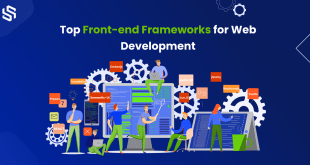In the fast-evolving landscape of web development, staying ahead of the curve is crucial for businesses and developers alike. One of the most promising and innovative approaches that has gained immense popularity is JAMstack. Short for JavaScript, APIs, and Markup, JAMstack offers a new way of building websites that brings numerous advantages over traditional methods. In this blog, we will delve deep into the world of JAMstack, exploring its fundamental concepts, advantages, and how it is reshaping the future of web development.
Understanding JAMstack: Unleashing the Power of Web Development
JAMstack represents a paradigm shift in web development, departing from the conventional server-centric approach to a modern, decentralized architecture. The fundamental principles of JAMstack revolve around decoupling the frontend and backend, relying on pre-built markup, and leveraging APIs to fetch dynamic content. By doing so, websites are not only faster and more secure but also scalable and easier to maintain.
The Three Pillars of JAMstack: JavaScript, APIs, and Markup
1. JavaScript: At the core of JAMstack lies JavaScript, the programming language that drives interactivity and dynamic features on the web. It enables developers to build responsive user interfaces and enhance the user experience.
2. APIs: APIs (Application Programming Interfaces) serve as the bridge between the frontend and various services or databases. They facilitate data retrieval and manipulation, enabling developers to fetch content dynamically and update websites in real-time.
3. Markup: Markup refers to the static files, such as HTML, CSS, and other assets, which are pre-built during the development process. These files are served directly to users, eliminating the need to generate content dynamically on each request.
Advantages of Embracing JAMstack
Enhanced Performance and Speed
JAMstack websites are pre-built and served through Content Delivery Networks (CDNs), resulting in faster loading times. With reduced server-side processing, the website’s performance is significantly enhanced, leading to improved user satisfaction and higher conversion rates.
Improved Security and Stability
Since JAMstack websites have minimal surface areas for attacks, they inherently offer better security. With the decoupling of frontend and backend, the attack vectors are limited, making it harder for malicious actors to exploit vulnerabilities.
Seamless Scalability
JAMstack architecture allows websites to scale effortlessly without relying on expensive server infrastructure. CDNs ensure content is delivered to users from the nearest server, reducing latency and accommodating heavy traffic with ease.
Simplified Development and Maintenance
By adopting JAMstack, developers can focus on frontend development without worrying about complex server setups and maintenance. The separation of concerns makes collaboration among developers smoother, leading to faster development cycles.
Offline Accessibility
With the help of Service Workers, JAMstack websites can offer offline accessibility. Users can still access previously visited content even without an internet connection, enhancing the user experience and accessibility.
Unleashing the Potential: Use Cases of JAMstack
E-commerce Platforms
JAMstack is a perfect fit for e-commerce platforms, where performance, security, and scalability are crucial. The decoupled architecture allows for seamless integration with various APIs for inventory management, payment processing, and shipping services.
Content-Rich Websites and Blogs
Websites and blogs that require frequent content updates can greatly benefit from JAMstack. With the ability to fetch content from APIs, content creators can update websites without triggering a rebuild, ensuring that the latest information reaches the audience promptly.
Progressive Web Apps (PWAs)
JAMstack provides a solid foundation for building PWAs, combining the best of web and mobile applications. The offline accessibility and fast loading times make PWAs an excellent choice for businesses aiming to deliver a seamless user experience.
Key Considerations for Embracing JAMstack
Developer Familiarity
Shifting to JAMstack may require a learning curve for developers accustomed to traditional server-side approaches. However, with the abundance of resources and tooling available, the transition can be relatively smooth.
Dynamic Content Limitations
While JAMstack excels in serving static content and handling APIs, it might not be the best fit for applications heavily reliant on real-time interactions or user-generated content.
Build Process Automation
Automation tools, such as continuous integration and deployment (CI/CD) pipelines, are crucial for streamlining the build process, ensuring timely updates and minimizing manual errors.
Commonly Asked Questions
Q1: Is JAMstack suitable for all types of websites?
Yes, JAMstack is versatile and can be used for a wide range of websites, including e-commerce platforms, blogs, and content-rich sites.
Q2: How does JAMstack improve website security?
JAMstack’s decoupled architecture reduces attack surfaces, making it harder for malicious actors to exploit vulnerabilities.
Q3: Can JAMstack websites handle high traffic?
Absolutely! JAMstack websites leverage CDNs for content delivery, ensuring seamless scalability even during traffic spikes.
Q4: Is JAMstack SEO-friendly?
Yes, JAMstack’s static markup and serverless architecture contribute to better SEO performance, leading to higher search engine rankings.
Q5: What are the popular tools for JAMstack development?
Some popular tools for JAMstack development include Gatsby, Next.js, Hugo, and Netlify.
 webfily
webfily



